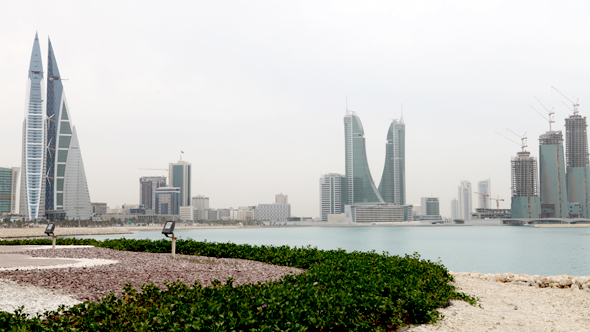Bahrain’s Baa1 Government Issuer Rating On Review For Possible Downgrade
Bahrain Top Stories
Bahrain’s Baa1 Government Issuer Rating On Review For Possible Downgrade
Moody’s Investors Service placed Bahrain’s “Baa1” government issuer rating on review for possible downgrade.

Bahrain’s Baa1 Government Issuer Rating On Review For Possible Downgrade
Moody’s Investors Service placed Bahrain’s “Baa1” government issuer rating on review for possible downgrade.
The first driver underlying Moody’s decision is the country’s rising government debt burden, which introduces uncertainty into the longer-term debt sustainability. Although Bahrain’s fiscal deficit for 2012 was a moderate 2.6% of GDP and smaller than the deficits recorded in 2009 and 2010, the IMF estimates Bahrain’s high and rising fiscal break even oil price to be at US$ 118.70 per barrel, which is above Moody’s forecast of US$ 106 per barrel for the average oil price in 2013. This reflects expenditure pressures that will likely widen the deficit considerably into the 4.0%-5.0% range in 2013 and 2014, according to the IMF. Given the budget’s significant dependence on oil revenues, Bahrain’s government finances are less flexible and its shock-absorption capacity is lower than that of its regional and global rating peers.
At the same time, Moody’s notes a number of factors that support Bahrain’s rating. These include a strong positive net international investment position and continued current account surpluses.
The second driver is the growing uncertainty, in Moody’s view, surrounding the dynamism of Bahrain’s longer-term growth prospects. Although the country has a more diversified economy than its GCC peers, it remains dependent on the oil and financial sectors, both of which have uncertain growth prospects. In addition, Moody’s believes that continued tensions may dampen confidence and investment in the economy, and ultimately weaken long-term growth prospects. Moreover, Moody’s expects that Bahrain’s real GDP trend growth rate will remain below its pre-crisis performance.
The third driver is that the two factors above are likely to lead to a considerable medium-term rise in government debt as a percentage of GDP, which the IMF predicts will exceed 60% of GDP by 2018.
Although not a prime ratings driver, Moody’s also notes that the banking sector remains large. Assets of onshore retail banks are almost three times Bahrain’s GDP. Moody’s recognizes, however, that high levels of capitalization should help absorb losses and limit the sovereign’s potential contingent liabilities in a severe downside scenario.
At the same time, Moody’s notes a number of factors that support Bahrain’s rating. These include a strong positive net international investment position and continued current account surpluses. In addition, Bahrain has a record of receiving sizable amounts of external financial assistance from fellow GCC governments.
Released in Bank Audi’s MWM, Week 24.